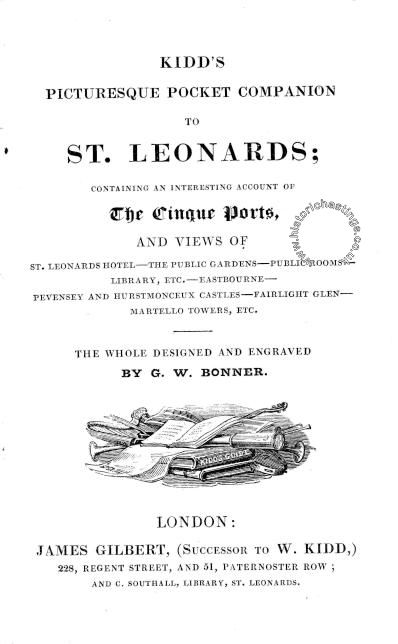
This volume is the very first St Leonards guide and is another of Kidd’s series of Pocket Companion guides, This edition, produced by James Gilbert, (successor to W.Kidd) probably dates from 1832 and is noted in the 1834 edition of “The Athenaeum”. The guide states “it is intended to form a Companion to the ‘Picturesque Guide to the Old Town of Hastings’ lately published, and to that end the illustrations in each work are original so that if it should be required to bind the two books in one volume, it can readily be done, – there being no duplicate of the engravings, and the literary proportion varied as much as possible”. Measuring 3 ½” x 5 ½ inches (90mm by 140 mm) these were indeed pocket editions. As with the Hastings edition The engravings are by G W Bonner and include one full-page engraving with the remaining engravings as vignettes within the text. The St Leonards edition was published by C Southall, library, St Leonards (opposite what was later to become The Royal Victoria Hotel). In 1837 Southall went on to produce his own “Pocket Guide to St Leonards and Hastings” with no map or illustrations.St Leonards was built on what we today it would call a greenfield site and according to the “Sussex Advertiser”, March 10, 1828 (Hastings wasn’t to get its own newspaper until early 1830) "On Saturday the 1st instant, the ceremony of laying the foundation stone of one of the intended new houses, near William the Conqueror's table, Hastings" this building was to become the St Leonard’s Hotel, now known as the Royal Victoria Hotel the report continues" Diversified Promenades are intended to be formed; and enchanting villas near a luxuriant wood, …. will be erected; and a spa-room, and warm and cold seawater baths, upon a superior scale, are also in contemplation.
“The road from the general London road will commence at Beauport, passing Hollington (which will shorten the distance to the coast at least two miles) and through a beautifully rich, romantic country." After the new road was built the route from the old town of Hastings became known as “Old London Road”
The first building to be completed was Burtons own house at 57 Marina, Crown House, (where, as a princess, Queen Victoria stayed at the end of 1834). The timber framing of the building had been prepared in London and brought down by sea.
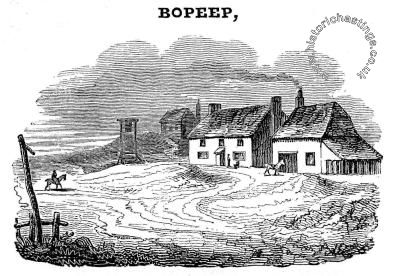
“Bo Peep”
Kidd describes it as “a very pretty little inn” with a rather odd attempt at explaining how it got its name “so-called, perhaps, from its being a short distance from the main road, and not discernible till near at hand” we now know that smugglers operated in that area and it may be that “Bo Peep” refers to the preventive men unable to find them. Smugglers = lost sheep. It is noted that the racecourse was close adjoining with racing usually commencing in September
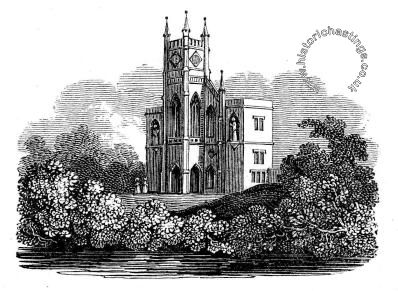
“Clock House” Kidd says “on the east walk is a magnificent Gothic tower erected on so high an eminence that it is visible at sea to a considerable distance and will doubtless be regarded as a landmark by coasting and other vessels”. It was one of the first buildings to be constructed.
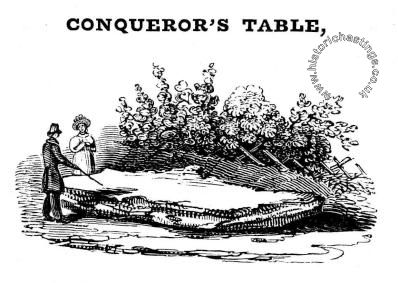
“Conqueror’s Table” Local legend has it that William the Conqueror had his dinner on this large flat stone when he landed in 1066. Found on the site of the Royal Victoria Hotel in 1828 it was moved to St Leonards Gardens, not far from its original location, later to the promenade and in 1966 in front of the pier. The stone has now been returned to the promenade not far from where it was discovered.
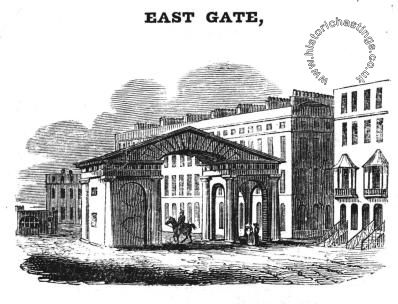
"East Gate”
This imposing archway marked the Eastern boundary of Burtons’ St Leonards and by the end of the 19th century had become an obstruction to traffic. On 23 January 1895 Hastings Corporation demolished it in the course of one dark night, despite major public opposition. Its site is now marked on the promenade by a red granite obelisk a few hundred yards to the west of bottom of London Road.
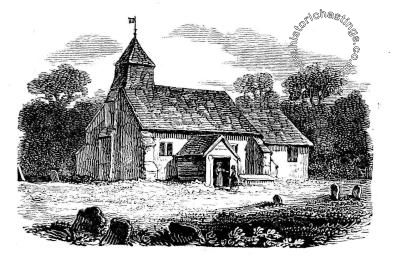
“Hollington Church”. Kidd comments that it is not known who built it or when it was built. By the mid 19th century it had become a popular destination for better-off Victorian tourists despite it being dark, damp and at least a quarter of a mile from the nearest habitation. Bonner’s engraving shows the church before its condition attracted the attention of the ‘restorers’ who, in 1865 and 1866 remodelled the whole building.
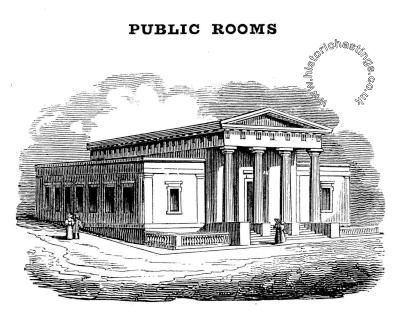
“Public Rooms”
Also known as the “Assembly Room” stated to be 60 feet long, fitted with orchestra, billiard rooms, card rooms etc.- better known nowadays as the ‘Masonic Hall’ behind the Royal Victoria Hotel and notice there are now small extensions to the building either side of the fine portico.
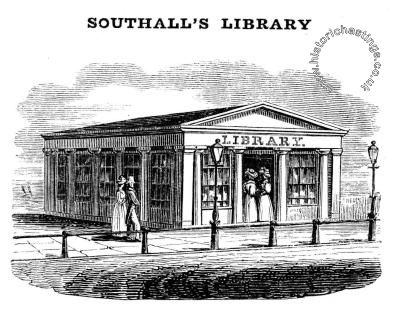 “Southall’s Library”
As publisher of the guide it’s inevitable that a thinly disguised advertisement for the library would be included. The library was originally sited on the seaward side of the parade opposite the hotel and was demolished in the 1930’s as part of Sydney Little’s seafront improvements.
“Southall’s Library”
As publisher of the guide it’s inevitable that a thinly disguised advertisement for the library would be included. The library was originally sited on the seaward side of the parade opposite the hotel and was demolished in the 1930’s as part of Sydney Little’s seafront improvements.
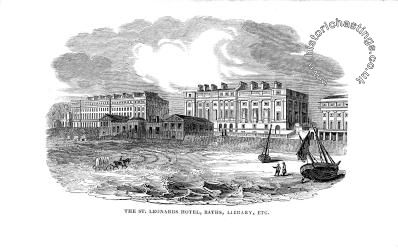
“St Leonard Hotel” In November 1834 Princess Victoria came to St Leonards and stayed for three months at Burton’s House, 57 Marina, Crown House, before becoming queen in 1837 and the hotel was renamed after her. The original entrance can nowadays be seen at the rear of the building facing the Masonic Hall. There is a tunnel under the roadway so that food could be provided by the hotel to the Hall.
Reproduction copies of Kidd’s Picturesque Pocket Companion to St.Leonards can be obtained from Ion @£5.99 + p&p or high quality prints of these images can also be obtained from Ion - use email address below